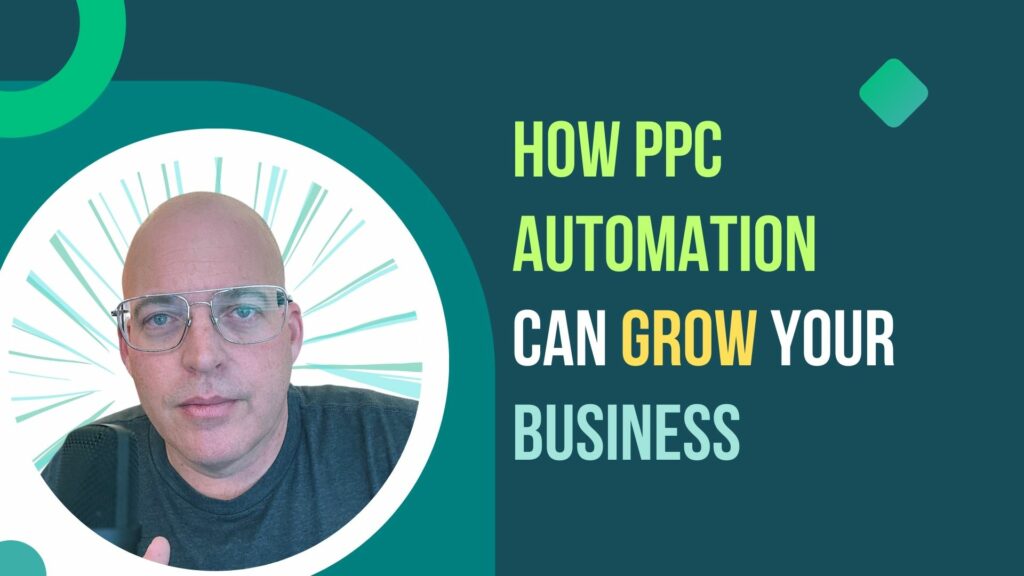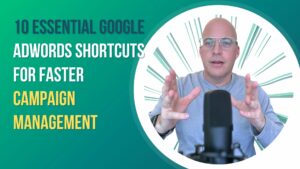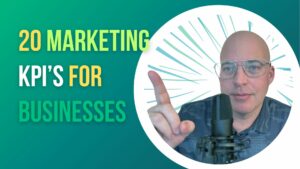In the ever-evolving digital marketing landscape, Pay-Per-Click (PPC) advertising has solidified its position as a powerhouse strategy for businesses seeking to gain visibility and drive targeted traffic to their online platforms. Unlike traditional advertising models, PPC operates on a pay-as-you-go basis, wherein advertisers only incur costs when users click on their ad. This pay-per-performance characteristic makes PPC an attractive and cost-effective avenue for businesses of all sizes to connect with their audience. However, the growing prominence of automation truly elevates PPC in the contemporary digital marketing sphere.
The accelerating pace of technology in the digital realm has ushered in a transformative era for marketing. Automation, in particular, has become paramount in streamlining and enhancing the efficacy of digital advertising strategies. As more businesses embrace the digital landscape, the competition for ad space intensifies, making it essential to consider innovative solutions. This is where PPC automation steps in, as it empowers advertisers to optimize their campaigns, make data-driven decisions, and efficiently manage budgets in a bustling online environment.
Understanding PPC Automation
PPC automation represents a sophisticated approach to managing Pay-Per-Click advertising campaigns, wherein algorithms and software tools are harnessed to streamline and optimize various aspects of the advertising process. At its core, PPC automation leverages machine learning and artificial intelligence to make real-time data-driven decisions.
It works by continuously analyzing many variables, such as keywords, bid amounts, ad performance, and audience behavior, to ensure that the advertising budget is allocated effectively. In essence, PPC automation minimizes the manual labor involved in campaign management while maximizing the potential for achieving desired outcomes, whether increasing website traffic, conversions, or ROI.
Several key elements can be subjected to automation within PPC campaigns. Firstly, keyword management, a foundational aspect of PPC, can be automated by tools that monitor keyword performance, suggest new keywords, and adjust bids accordingly. Ad copy generation and optimization can also be automated, with algorithms fine-tuning ad messaging to resonate with specific audience segments.
Moreover, the process of bidding, which involves setting the optimal bid amount for each keyword to maximize ad visibility, is often automated through strategies like Target CPA (Cost-Per-Acquisition) or ROAS (Return on Ad Spend) bidding. Additionally, the scheduling and delivery of ads can be automated to ensure they are displayed at the most reasonable times to reach the target audience.

Benefits of PPC Automation
Integrating automation into PPC campaigns brings many compelling advantages that can significantly benefit businesses aiming to maximize their digital advertising efforts. Firstly, automation enhances campaign efficiency. Automation algorithms can make split-second decisions by continuously analyzing vast datasets in real-time adjusting bidding strategies and ad placements to optimize campaign performance. This dynamic approach allows advertisers to stay ahead of competitors. It ensures their ads are displayed to the right audience at the right time, ultimately improving click-through rates and conversions.
Furthermore, automation in PPC is a potent time-saver. Time is a precious resource in digital marketing, and manual campaign management can be incredibly time-consuming. Automation handles routine tasks such as bid adjustments, keyword optimizations, and ad scheduling, freeing marketers to focus on strategic activities like crafting compelling ad copy and devising innovative marketing strategies. The labor-intensive nature of manual campaign management often leads to overlooked opportunities and missed efficiencies, which automation remedies by tirelessly monitoring and optimizing campaigns 24/7. This results in time and cost savings, as resources can be allocated more efficiently, reducing the likelihood of overspending on underperforming keywords or ads.
Improved Campaign Efficiency
Automation plays a pivotal role in enhancing the efficiency of ad campaigns by harnessing data-driven insights and real-time adjustments. It does so by continuously monitoring and optimizing various elements of PPC campaigns, resulting in better results and a higher return on investment. Here’s a detailed exploration of how automation optimizes ad campaigns and examples of automated bidding strategies in action:
Data-Driven Decision Making
Automation tools analyze vast datasets, including user behavior, competitor activity, and historical performance data. By doing so, one can identify patterns and trends that might go unnoticed by manual campaign management. For example, suppose an automated system detects that certain keywords perform better during specific hours of the day. In that case, it can adjust bidding strategies to allocate a higher budget to those hours, thereby increasing the chances of reaching the audience when they are most active.
Real-Time Adjustments
Automated systems can adjust instantly based on the evolving digital landscape. If a competitor launches a similar ad campaign and starts bidding aggressively on certain keywords, an automated bidding strategy like “Target Impression Share” can respond by increasing bids to maintain a competitive position in ad auctions.
Optimized Keyword Management
Automation tools excel at keyword optimization. They can identify low-performing keywords and either suggest removal or automatically adjust bids to improve performance. Conversely, when automation recognizes high-performing keywords, it can allocate more budget to ensure maximum exposure and capitalize on their success.
Example of Automated Bidding
Consider an e-commerce business using Google Ads. With an automated bidding strategy like “Target ROAS” (Return on Ad Spend), the system sets bids to maximize revenue while maintaining a specific ROAS target. If a particular product category consistently generates an ROAS of 500%, the automated system will adjust bids to allocate more budget to this category, thereby increasing revenue.
Ad Copy Testing
Automation can also facilitate A/B testing of ad copy. It can automatically rotate different ad variations and monitor which ones perform best regarding click-through rates and conversions.

Enhanced Targeting
Automation tools wield a formidable influence in enhancing audience targeting within PPC campaigns. They accomplish this by harnessing the wealth of data available in the digital realm to pinpoint and engage with the most relevant audiences. Here’s a comprehensive exploration of how these tools refine audience targeting and the role of data-driven insights in PPC automation:
Refining Audience Targeting
Automation tools excel at segmenting and categorizing user data to identify high-potential audience segments. They analyze demographics, location, device usage, and online behavior to create precise audience profiles. For example, suppose an e-commerce business wants to target users interested in fitness equipment. Automation can identify users who have recently searched for fitness-related terms or visited fitness-related websites. Once these segments are defined, automation can customize ad content and bidding strategies to resonate with each group’s unique preferences and needs. This level of granular targeting ensures that ad spending is directed toward individuals most likely to convert, optimizing the campaign’s efficiency.
Data-Driven Insights in PPC Automation
Data-driven insights are the cornerstone of PPC automation. Automation tools continuously collect and analyze data generated by ad campaigns, website traffic, and user interactions. These insights inform every aspect of campaign management, from keyword selection to bid optimization. For example, if data reveals that a particular keyword consistently leads to high-converting traffic, automation will prioritize that keyword by adjusting bids and ad placements accordingly. Furthermore, data-driven insights enable dynamic ad content generation. Automation can identify which ad variations perform best with specific audience segments and deliver the most compelling messages to users at the right time. This data-driven approach ensures that advertising efforts are not based on guesswork but on tangible, actionable information, resulting in more effective campaigns and better ROI.
Cost Savings
Automation tools, particularly smart bidding strategies, are pivotal in controlling advertising costs. These strategies, like Target CPA (Cost-Per-Acquisition) and Maximize Conversions, use historical data and real-time signals to adjust bids automatically. For instance, if a business has set a Target CPA of $20 for a campaign, the automation system will dynamically adjust bids for each auction to maximize the chances of acquiring a customer at or below the specified cost. This ensures that ad spending is allocated efficiently, avoiding overspending on clicks that are less likely to convert.

Ad Copy Optimization
Automation significantly elevates the process of ad copy optimization and messaging, ensuring that advertisements are compelling and tailored to the target audience. Here’s a detailed look at how automation achieves this and tips for leveraging automation in A/B testing:
Dynamic Ad Customization: Automation tools utilize data-driven insights to customize ad content in real-time dynamically. For example, they can automatically insert relevant keywords, product names, or location information into ad copy to make it more contextually relevant to the user’s search query. This level of personalization enhances user engagement and increases the chances of clicks and conversions.
Ad Performance Analysis: Automation monitors ad performance and identifies which ad variations outperform others. Based on this data, it can automatically allocate more budget and impressions to the winning ad variants. Additionally, it can pause underperforming ads to prevent the wastage of resources. This ongoing analysis ensures that ad copy remains optimized for maximum impact.
Leveraging Automation for A/B Testing: A/B testing is vital to ad copy optimization. Automation can streamline this process by automatically rotating ad variations and tracking performance. Here are tips for successful A/B testing with automation:
Start with a clear hypothesis: Define what you want to test and why. For instance, test whether a specific call-to-action phrase results in more conversions.
Use a sufficient sample size: Ensure your tests run long enough to gather statistically significant data. Automation can help by providing real-time insights.
Monitor performance closely: Continuously analyze the data from your A/B tests. Automation tools can alert you when a statistically significant difference is detected.
Ad Extensions and Formats
Automation tools are invaluable in maximizing the effectiveness of ad extensions and adapting ad formats for optimal results. Here’s how they contribute to these aspects:
Effective Ad Extensions: Automation can analyze user behavior and ad performance to determine which ad extensions (e.g., site links, callouts, structured snippets) are most likely to resonate with your audience. It can then automatically generate and display the most relevant ad extensions for each search query or user, improving ad visibility and click-through rates.
Ad Format Adaptation: Automation ensures that ad formats are dynamically adapted to suit the platform and user context. For instance, on mobile devices, automation can prioritize shorter ad copy and promote click-to-call extensions, making it easier for users to contact your business. On the desktop, it might focus on showcasing product images and reviews.
Cross-Channel Consistency: Automation allows consistent ad messaging across various channels and devices. This ensures that your brand’s message remains coherent and recognizable, regardless of where and how users encounter your ads.

Reporting and Analytics
Automation is pivotal in generating insightful reports and analytics in PPC campaigns. Here’s how it accomplishes this and aids in decision-making:
Real-Time Data Collection: Automation tools continuously collect data from various sources, including ad platforms, websites, and user interactions. This data aggregates, analyzes, and presents in real-time, providing advertisers with up-to-the-minute insights into campaign performance.
Customized Dashboards: Many automation platforms offer customizable dashboards that allow advertisers to visualize data in a way that’s most relevant to their goals. These dashboards can display key performance indicators (KPIs), such as click-through rates, conversion rates, and return on investment, making it easier to monitor progress and identify areas for improvement.
Data-Driven Recommendations: Automation can go beyond reporting by providing data-driven recommendations. For example, it can suggest bid adjustments, ad copy optimizations, or audience targeting refinements based on historical performance data. These recommendations aid in making informed decisions to optimize campaign performance.
Challenges and Considerations
While PPC automation offers numerous benefits, it’s essential to acknowledge potential challenges and limitations. Here are some considerations and advice on how to address them:
Loss of Control: Automation can sometimes make rapid changes that appear counterintuitive. To address this, clearly understand your campaign goals and performance metrics. Set up appropriate automation rules and thresholds to ensure automated changes align with your objectives.
Data Quality: Automation relies heavily on data. Inaccurate data can lead to suboptimal decisions. Ensure you properly configure and regularly audit your tracking and data collection systems.
Budget Management: Automation can impact budget allocation. Set daily or monthly budget caps to prevent overspending. Additionally, monitor your campaigns closely, especially when starting with automation, to ensure budgets are being managed effectively.
Adaptation to Algorithm Changes: PPC platforms frequently update their algorithms, which can impact automated strategies. Stay informed about platform changes, and be prepared to adjust your automation settings accordingly.
Testing and Learning: Automation should be approached with a learning mindset. Test different automation strategies, and be open to adjusting them as you gather data and insights. Continuous optimization is key to success.
Human Oversight: While automation is powerful, it doesn’t replace the need for human oversight. Regularly review and audit your automated campaigns to ensure they align with your business objectives and brand messaging.

Future Trends in PPC Automation
PPC automation is poised to transform significantly as the digital marketing landscape evolves. Here’s an exploration of emerging trends and technologies in PPC automation, along with strategies for businesses to stay ahead by embracing these trends:
Machine learning algorithms are becoming more sophisticated in understanding user intent and behavior. Businesses can stay ahead by embracing these advancements to improve ad targeting and personalization. This includes using AI-powered chatbots for customer interactions, predictive analytics for audience segmentation, and AI-driven ad copy generation for increased relevance.
Voice Search Optimization
With the rise of voice-activated devices and virtual assistants, businesses should prepare for the growing importance of voice search in PPC. Embracing voice search optimization strategies, such as using long-tail keywords and creating conversational ad copy, will be vital to staying relevant.
Automation for Smarter Bidding
Automation will continue to play a central role in bid management. The trend is moving towards more automated and dynamic bidding strategies considering various factors like device, location, and audience behavior. Businesses should leverage these strategies to optimize ad spend and drive better ROI.
Cross-Channel Integration
PPC automation is expanding beyond search engines to encompass various digital advertising channels, including social media and display advertising. Integrated campaigns that utilize automation tools to synchronize messaging and targeting across multiple channels will become increasingly important for reaching a broader audience.
Video and Visual Content
The growing popularity of video content demands automation in ad creation and optimization. Automated video ad creation tools and AI-driven video content personalization will become essential for engaging audiences effectively.
Data Privacy and Compliance
With increasing concerns over data privacy and regulations like GDPR and CCPA, businesses must prioritize data security and compliance in their PPC automation efforts. Embrace tools and strategies that ensure data protection and compliance with relevant laws.
Creative Automation
Automation is not limited to bidding and targeting; it’s also making inroads into creative aspects. Advertisers can benefit from automated ad-generation tools that use machine learning to create compelling ad copy and visuals.
Future of PPC Automation
With automation tools becoming increasingly sophisticated and aligned with emerging trends, businesses have an unprecedented opportunity to optimize their PPC campaigns, enhance audience targeting, and achieve cost-effective results. By embracing the evolving landscape of automation, staying vigilant about potential challenges, and continuously adapting to the latest technologies and strategies, businesses can stay competitive and leverage PPC automation for growth and success in the digital realm.

Frequently Asked Questions
What are the Primary Benefits of Using PPC Automation?
PPC automation offers several benefits, including improved campaign efficiency, enhanced audience targeting, cost savings, ad copy optimization, and streamlined reporting. It allows businesses to achieve better results with less manual effort.
How Does Automation Help in Controlling Advertising Costs?
Automation helps control costs by using data-driven insights to adjust bids, allocate budget efficiently, and prevent overspending on underperforming keywords or ads. It ensures that it directs ad spending toward clicks and conversions that are most likely to generate revenue.
Can Automation Improve Ad Copy and Messaging?
Yes, automation can optimize ad copy by dynamically customizing content based on user data and analyzing ad performance.
How Can Businesses Address Challenges in PPC Automation?
To address challenges, businesses should set clear campaign goals and maintain human oversight for strategic decisions and creative input.
How Can Businesses Stay Ahead in PPC Automation?
To stay ahead, businesses should invest in ongoing education and training. Explore partnerships with specialized agencies and continuously test and adapt to new automation features.








